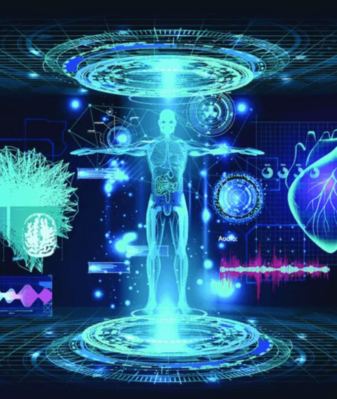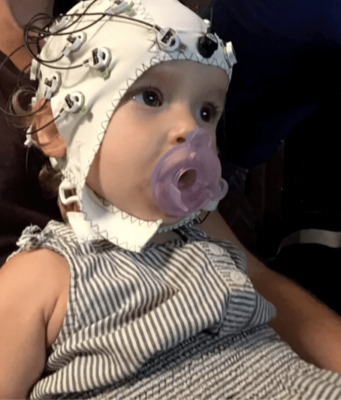The story
Human immunodeficiency virus (HIV) infection is a major global public health issue. Despite this, the only treatment available in the mainstay is antiretroviral therapy. This treatment is not curative, it needs to be used lifelong, and there are many issues with compliance and side effects. In recent years, stem cell therapy has shown promising results in HIV management, and it can have a major impact on the future of HIV treatment and prevention1.
A 53-year-old man in Germany has recently been declared clear of HIV following a procedure that replaced his bone marrow cells with HIV-resistant stem cells from a donor2, making him the third patient to be declared free of HIV after stem-cell therapy.
Previously, 2 cases of permanent recovery following stem-cell therapy have been reported. The first case was the Berlin Patient, who received a bone marrow transplant in 2007 to treat leukaemia. The donor had a rare genetic mutation that made their cells resistant to HIV infection. After the transplant, the patient’s immune system was completely replaced with cells that were resistant to HIV, and the patient remained HIV-free for over a decade3.
The second case was reported in 2020, where a patient with HIV and lymphoma received a bone marrow transplant from a donor with the CCR5-delta-32 mutation4. The patient underwent a conditioning regimen that included chemotherapy and total body irradiation. After the transplant, the patient’s HIV viral load became undetectable, and the patient remained off antiretroviral therapy without a detectable virus for more than 30 months.
The technique
The idea behind stem-cell therapy for HIV is to replace the infected CD4+ T cells with healthy CD4+ T cells derived from stem cells. CD4+ T cells are the primary target of HIV, and the virus replicates within these cells, eventually leading to their destruction. By replacing the infected cells with healthy cells, the virus is effectively eliminated from the body5.
In 2009, a man was also reported to be cured of both HIV and leukaemia after receiving a stem-cell transplant from a donor who was genetically resistant to HIV6. The patient remained off ART for over a year and showed no detectable virus in their blood. This generated significant interest in creating similar autologous products by a variety of “cell engineering” approaches to stem cell therapy for HIV7.
Another study involved the use of gene editing to create HIV-resistant stem cells. The researchers used CRISPR-Cas9 technology to delete the CCR5 gene, which codes for a protein that HIV uses to enter CD4+ T cells, in stem cells8. The edited stem cells were then differentiated into CD4+ T cells and injected into mice infected with HIV. The mice showed a significant reduction in viral load and improved survival rates.9
However, this type of stem-cell transplant is risky and not practical for most HIV-positive individuals.
Perspectives for the future?
While stem-cell therapy holds great promise for a cure for HIV, there are several challenges that need to be overcome. One challenge is the ability to produce enough healthy CD4+ T cells from stem cells to replace the infected cells in the body. Another challenge is the risk of graft-versus-host disease, which can occur when the donor stem cells attack the recipient’s tissues.
In conclusion, stem-cell therapy offers a potential cure for HIV by replacing the infected CD4+ T cells with healthy cells derived from stem cells. While there are challenges that need to be addressed, the results from current studies are promising. However, it is very unlikely that bone marrow replacement will be rolled out to people who don’t have leukaemia, because of the high risk associated with the procedure, particularly the chance that an individual will reject a donor’s marrow.
References
- Khalid K, Padda J, Wijeratne Fernando R, Mehta KA, Almanie AH, Al Hennawi H, Padda S, Cooper AC, Jean-Charles G. (2021) Stem Cell Therapy and Its Significance in HIV Infection. Cureus. 2021 Aug 27;13(8):e17507.
- Sara Reardon (2023) Third Patient Free of HIV after receiving virus-resistant cells.Nature News, 21 February 2023, available at https://www.nature.com/articles/d41586-023-00479-2
- Jon Cohen (2014) How did the ‘Berlin Patient’ rid himself of HIV?, Science, News, available at https://www.science.org/content/article/how-did-berlin-patient-rid-himself-hiv
- Jensen, BE.O., Knops, E., Cords, L. et al.(2023) In-depth virological and immunological characterization of HIV-1 cure after CCR5Δ32/Δ32 allogeneic hematopoietic stem cell transplantation. Nat Med. Available at https://www.nature.com/articles/s41591-023-02213-x#citeas
- Kitchen, S. G., Zack, J. A., (2019) Stem-Cell-Based Approaches to HIV/AIDS Therapy. Stem Cells and Development, 2019, 28(23), 1477-1488.
- Heidi Ledford (2009) Stem-cell transplant wipes out HIV. Nature News, 11 February 2009, available at https://www.nature.com/articles/news.2009.93
- DiGiusto DL. (2015) Stem cell gene therapy for HIV: strategies to inhibit viral entry and replication. Curr HIV/AIDS Rep. 2015 Mar;12(1):79-87.
- Gupta RK, Abdul-Jawad S, McCoy LE, Mok HP, Peppa D, Salgado M, Martinez-Picado J, Nijhuis M, Wensing AMJ, Lee H, Grant P, Nastouli E, Lambert J, Pace M, Salasc F, Monit C, Innes AJ, Muir L, Waters L, Frater J, Lever AML, Edwards SG, Gabriel IH, Olavarria E. (2019) HIV-1 remission following CCR5Δ32/Δ32 haematopoietic stem-cell transplantation. Nature. 2019 Apr;568(7751):244-248.
- Xu, L., Yang, H., Gao, Y., Chen, Z., Xie, L., Liu, Y., … & Chen, M. (2019). CRISPR/Cas9-Mediated CCR5 Ablation in Human Hematopoietic Stem/Progenitor Cells Confers HIV-1 Resistance In Vivo. Molecular Therapy-Nucleic Acids, 18, 352-360.







